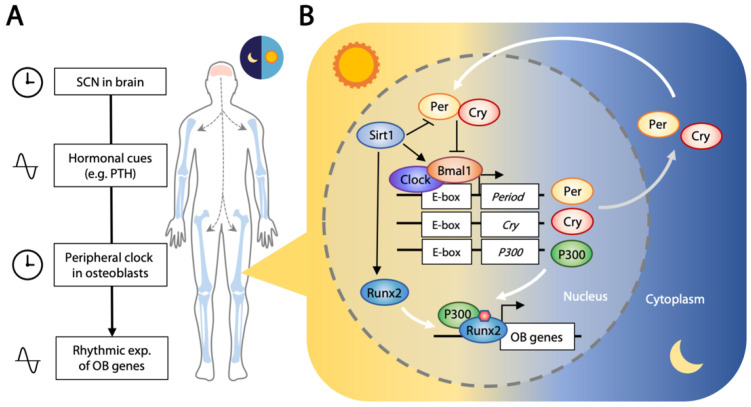Figure 3.
Circadian clock in bone. (A) Suprachiasmatic nucleus (SCN) in the hypothalamus receives the 24 h light–dark signals and conveys them in the form of nerve or hormonal signals. The rhythmic level of hormone controls the peripheral clock in bone, hence leading to rhythmic expression of osteoblastic (OB) genes. (B) The molecular clock involves the positive regulators CLOCK and BMAL1 which bind to the E-box elements and activate expression of circadian negative regulators PER and CRY. PER and CRY inhibit activities of CLOCK and BMAL1 to form a feedback loop that occurs within a period of 24 h. CLOCK/BMAL1 can bind to the E-box region and activate expression of P300 which subsequently promotes the acetylation of histone 3 and facilitates the formation of a transcriptional complex with RUNX2 to drive expression of osteoblastic genes. Sirt1 has dual roles in the circadian clock and osteogenesis. It binds CLOCK/BMAL1 in a circadian manner and promotes the deacetylation and degradation of PER and is a positive regulator of RUNX2.

